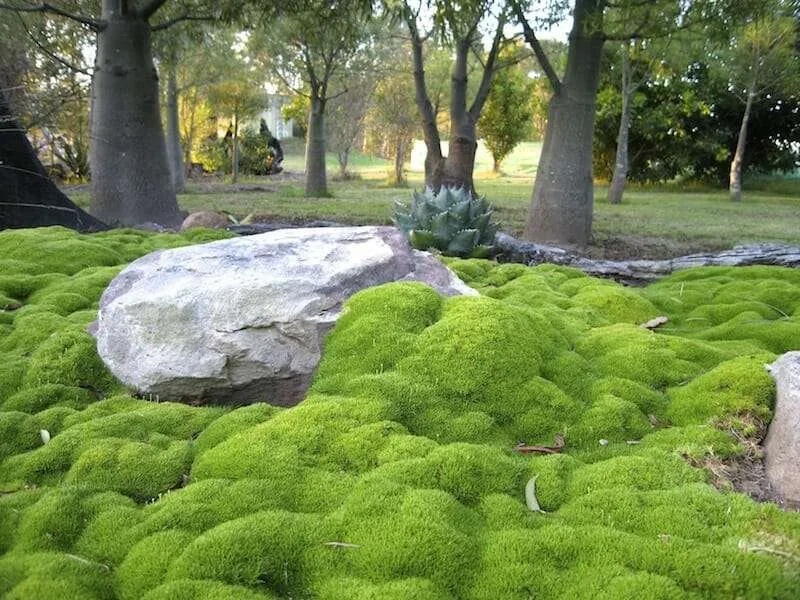Dymondia, Dymondia margaretea
Your search is over. If you live in a moderately frost-free area, I’ve found you the perfect ground cover. I can also recommend a great, dense lawn substitute that never needs mowing. A plant that works wonders between pavers? I’ve got that, too. And you know what? The answer for all three can be found in one plant—the miraculous multitasker Dymondia.
I’ve used this plant in many of my client’s gardens and I think I’ve grown to love it more and more. If you already know this plant then you can sing its praise with me. If this is your introduction, then you are about to join the club.
Please keep reading to learn more about this low-maintenance marvel.
Photography by Kier Holmes.

Also known as silver carpet, Dymondia is native to South Africa and named after Margaret E. Dryden-Dymond, a horticulturist who in 1933 discovered the specimen while exploring Capetown. Growing to only one to three inches high and one to two feet wide, this ground-hugging hero sports gray-green, narrow evergreen leaves that appear silvery because of their shimmery undersides. (In fact, upon first glance you might think the plant is variegated.) In the summer, masses of flat, daisy-like happy yellow blooms polka dot the carpet.
Dymondia is not the slowest growing, nor is it the fastest; but given a little water for a few months, the plant can take off—though not in an invasive way. This is one polite plant even though it spreads through rhizomes. In fact, once properly filled out, it will smother most weeds and create a dense plush carpet that is satisfying to walk on.
I try to buy Dymondia in flats as it is less expensive than 6-packs or 4″ pots. With the flats, I divide the mass into the desirable shapes and sizes. I usually plant the patches 12 inches apart. I have also divided existing plants in the early spring and replanted right away, making sure to keep them well-watered at first.
Cheat Sheet

- Use Dymondia as a low-maintenance lawn substitute for small areas in USDA Zones 9b through 11. This works well in areas with low foot traffic.
- When planted on hills or slopes, it helps retain soil.
- Add Dymondia between pavers or stepping stones to create a lush, modern look.
- Bees and other pollinators find this low-growing ground cover alluring, but deer leave it alone. Side note: gophers can be a fan of it due to its tender roots so beware.
- Totally tolerant of salt spray, this plant is a good contender for coastal conditions.
Keep It Alive

- Grows best in full sun to light shade.
- Well-draining, sandy soil is needed for success.
- Can survive light frosts but can’t survive below 28 degrees F.
- Although eventually drought-tolerant, new plants require regular water to get established. Mulching between the new plants helps retain needed moisture in the early months.
- Pro Tip: if the leaves curl up or turn extra gray, this means a drink of water is appreciated. And don’t despair, I’ve seen a patch go ghostly and then spring back with a little love.
For more lawn substitutes, see:
- Fields of Green: 5 Favorite Lawn Substitutes
- Ask The Expert: How to Plant a Meadow Garden, with James Hitchmough
- Gardening 101: Ground Covers for Every Landscape












Have a Question or Comment About This Post?
Join the conversation (0)